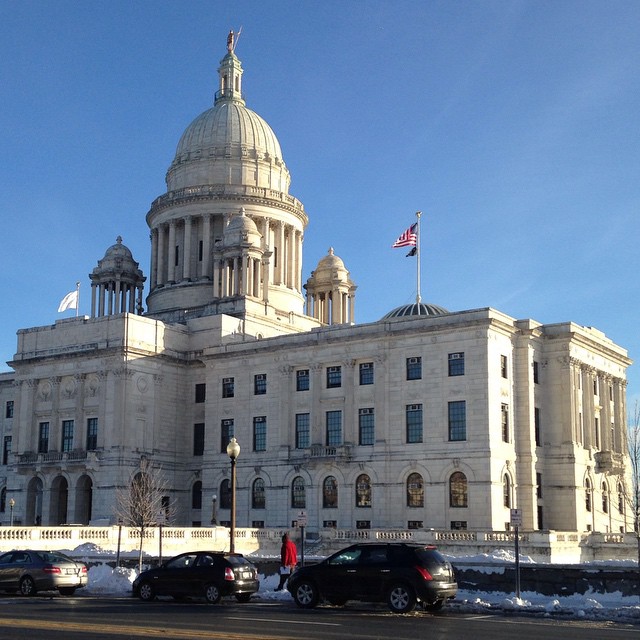The City of Providence is actively improving a plan to become more sustainable in several sectors, and PP&L is thrilled that the recent topic for open review was energy. The “Sustainable Providence” plan was spearheaded by the Office of Sustainability and the Environmental Sustainability Task Force. The old plan is being revitalized as “SustainPVD” by Mayor Jorge Elorza and new Sustainability Director Leah Bamberger. The revision process is open to the public and all interested are encouraged to engage in the development.
 PP&L is eager, as always, to participate; we actively promote effective efficiency and clean energy policy at the state and municipal level. PP&L is a member of the Energy Efficiency Collaborative that helps shape Rhode Island’s energy efficiency programs and our Executive Director was part of the Advisory Council for the state guide, “Energy 2035”, which helps inform future energy programs. The existing Sustainable Providence plan is a good one, but there’s plenty of room to expand and enhance it as SustainPVD.
PP&L is eager, as always, to participate; we actively promote effective efficiency and clean energy policy at the state and municipal level. PP&L is a member of the Energy Efficiency Collaborative that helps shape Rhode Island’s energy efficiency programs and our Executive Director was part of the Advisory Council for the state guide, “Energy 2035”, which helps inform future energy programs. The existing Sustainable Providence plan is a good one, but there’s plenty of room to expand and enhance it as SustainPVD.
The energy section of the original Sustainable plan rightly focused on improving Providence’s energy mix and energy usage. It proposed to increase local renewables in advantageous locations. The plan included an initiative to promote residential solar on the west side of Providence that concluded in the summer of 2015. With the cost of solar continuing to decline and strong incentives available from policies like the “Renewable Energy Growth Program”, this is a great time to promote solar in Providence. If Providence wants to be a leader in sustainability, it will need to grow green power within the city.
The overarching goal is to “achieve a minimum of 30% energy use reduction by 2030 in all City-owned property”.
The overarching goal is to “achieve a minimum of 30% energy use reduction by 2030 in all City-owned property”. That 30% reduction is for overall Providence energy consumption using 2010 levels as the baseline to achieve that target.
The SustainPVD Plan has four proposed metrics to analyze the progress of attaining its:
- Energy Use Intensity of City owned properties
- Percent reduction of energy used in residential and municipal buildings
- This may be divided into two separate metrics in the next draft
- Percent of energy used in municipal buildings that come from renewable sources
- Number of renewable energy projects in Providence
Already, some key action items from the original sustainability plan have been accomplished. Providence has completed a renewable energy feasibility study for City property with the intent to expand clean energy projects as able. Additionally, Providence has established an energy-use baseline for all City properties and continues to conduct efficiency audits. The City is in the process of converting streetlights to LEDs, which are projected to reduce municipal streetlight GHG emissions by 25%.
Energy efficiency, as we’ve mentioned so often in this blog, is a vital resource that we need to prioritize alongside renewables. Energy efficiency improvements are often cheaper than the supply of out-of-state energy, making it economically feasible in addition to the many important environmental attributes of cutting back energy usage and emissions.
Communicating the existence of such energy savings opportunities to Providence residents was an action step in the original plan. Mayor Elorza went a step further to create the SustainPVD Ambassador program to empower local leaders in various neighborhoods with resources to engage other residents in Providence sustainable programs. We’ve seen how such a program can make a substantial impact. Our sister organization Mass Energy is partnered with the Renew Boston program, a city-led collaborative effort that promotes energy efficiency. The Renew Boston program connects residents to community non-profits, approved contractors, and cost-effective upgrades. The program includes weatherization and solar incentives that helped Boston earn top efficiency marks in 2014. Providence should implement a similar approach into the SustainPVD plan to help the city improve its national energy efficiency ranking.
Investing in efficiency and renewable energy is also an investment in Providence workers. A recent study, The Rhode Island Clean Energy: 2015 Industry Report, demonstrated that Rhode Island currently supports 10,000 jobs in the clean energy sector. Growing jobs in solar installation or deep retrofits not only will make Providence more sustainable, it will help keep dollars in the Ocean State.
One recommendation PP&L has for the SustainPVD plan is to make the incentives and programs to become more inclusive and attainable to renters. Renters are a large population in Providence that is often overlooked or underserved for efficiency planning; creative solutions that work with landlords and renters could help reduce energy usage for several residents.
Join PP&L at the next open meeting Nov.17th led by the Environmental Sustainability Task Force and the Sustainability Office to examine transportation and Providence at 8:30 am at Providence City Hall, 3rd Floor.
More information here: http://www.providenceri.com/sustainability
 PP&L is eager, as always, to participate; we actively promote effective efficiency and clean energy policy at the state and municipal level. PP&L is a member of the Energy Efficiency Collaborative that helps shape Rhode Island’s energy efficiency programs and our Executive Director was part of the Advisory Council for the state guide, “
PP&L is eager, as always, to participate; we actively promote effective efficiency and clean energy policy at the state and municipal level. PP&L is a member of the Energy Efficiency Collaborative that helps shape Rhode Island’s energy efficiency programs and our Executive Director was part of the Advisory Council for the state guide, “
Comments